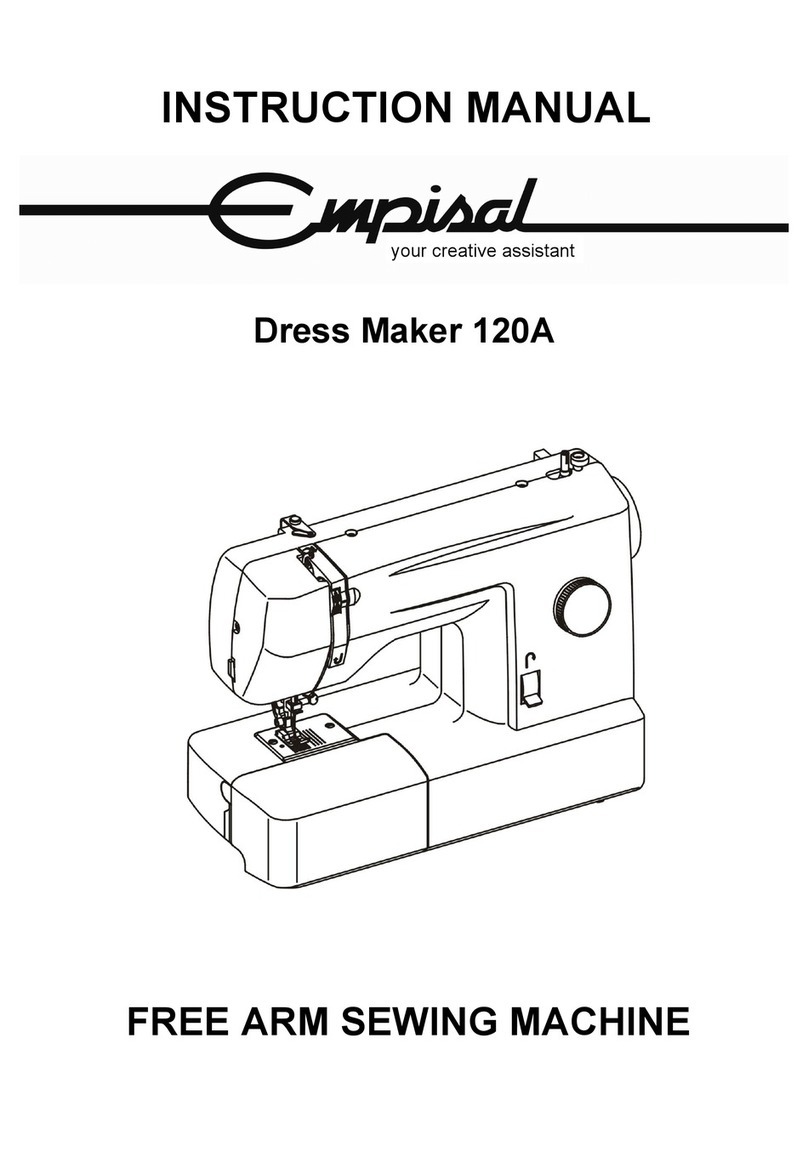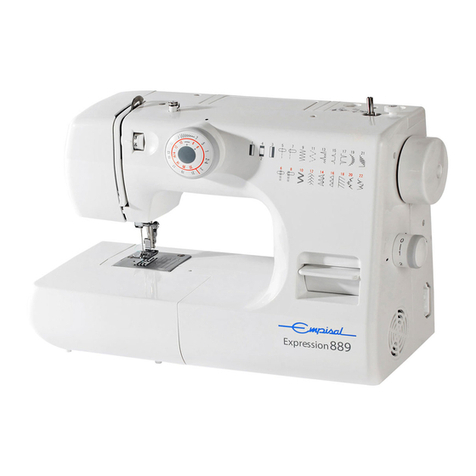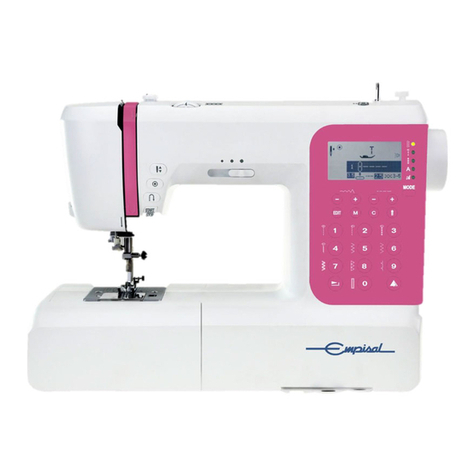Empisal em-250 User manual

INSTRUCTION MANUAL
SEWING MACHINE
EM-250

- 1 -
Safety instructions
Like any other electrical device, a sewing machine
can cause serious, even life-threatening injuries.To
avoid this, and in order to work safely:
• Before initial use of your sewing machine, read
these operating instructions thoroughly.
• Keep the operating instructions in a suitable place
near the machine. When passing the appliance on
to others, always enclose the operating instructions.
• Always disconnect the power supply when leaving
the machine unattended. This will prevent the risk of
accidents if the machine is switched on accidentally.
• First pull the power plug before changing the bulb or
performing maintenance work on the machine.
This will prevent possibly life-threatening electric
shocks.
• Do not remove the plug from the socket by pulling
on the cable. Always grip the plug and not the cable
when pulling out the power plug.
• Only use the sewing machine in dry rooms.
Don’t use the machine in wet condition and location.
• In case of any visible damage on the machine, the
foot switch or the power cable: Have the damage
repaired by Customer Service before using the
sewing machine again.
• Never let children or elderly persons handle the
machine unsupervised because they may not
properly appreciate the possible dangers. Keep
electrical appliances outside the reach of children.
• Never use the machine when the ventilation
apertures are blocked. Keep the ventilation
apertures of the machine and the foot switch free
from fluff, dust and waste material.
• Don’t let children play with sewing machine.
• Never use the machines if the air went are blocked
keep the air wends free form dust, fusel and
leftovers.
• Never place anything on the foot controller.
• This appliance is not intended for use by persons
(including children) with reduced physical, sensory
or mental capabilities, or lack of experience and
knowledge, unless they have been given
supervision or instruction concerning use of the
appliance by a person responsible for their safety.
• Children should be supervised to ensure that they
do not play with the appliance.
Warning against injuries
and material damages:
According to legislation, you as the user of an
electrical appliance are responsible for
preventing possible accidents through
safety-conscious behaviour:
• Keep your work space tidy. An untidy
workplace can lead to accidents.
• Provide adequate lighting when working!
• Do not wear loose clothing or jewellery,as
these can be caught in the moving parts. You
should also wear a hair net if you have long
hair.
• Avoid abnormal posture. Remain steady and in
a well-balanced position at all times.
• Be alert! Pay attention to what you are doing.
Always take a rational approach to your work.
Never work with the sewing machine if you are
unable to concentrate or if you are feeling
unwell!
If accidents occur as a result of handling the
machine with insufficient care, or failure to follow
the safety instructions in this manual, then the
manufacturer cannot accept liability.
If the supply cord that fixed with foot controller is
damaged, it must be replaced by the
manufacturer or its service agent or a similar
qualified person in order to avoid a hazard.
Please use for your sewing machine the
ZHEJIANG FOUNDER presser foot, type
KD-2902.
Power rating: 220 - 240V ~ , 50Hz
Current rating: 1.0A
Protection Class : II

- 2 -
CONTENTS
Name of parts..............................................................................................3-4
Accessories....................................................................................................5
Before sewing (Power supply and sewing lamp)...........................................6
Removing extension table..............................................................................7
Free-arm sewing ............................................................................................7
Winding the bobbin ....................................................................................... 8
Removing bobbin case and bobbin............................................................... 9
Inserting bobbin into bobbin case ................................................................. 9
Inserting bobbin case into shuttle race ........................................................10
Threading upper thread & Twin needle threading .......................................11
Drawing up the bobbin thread......................................................................12
Changing sewing directions.........................................................................12
Levelling machine .....................................................................................13
Adjusting thread tension...............................................................................14
Regulating the presser foot pressure...........................................................15
Drop feed .....................................................................................................15
Changing needle..........................................................................................16
Fabric-Thread-Needle-Table........................................................................17
Sewing (pattern selector) and operation table.............................................18
To start sewing.............................................................................................19
How to finish stitches ...................................................................................20
Straight stitch................................................................................................21
Zigzag sewing ..............................................................................................21
Overcasting..................................................................................................22
Straight and zigzag stretch stitches.............................................................22
Blind stitch...............................................................................................23-24
Button sewing...............................................................................................25
Binding .........................................................................................................25
Zipper sewing...............................................................................................26
Buttonhole sewing........................................................................................27
Hemming......................................................................................................28
Twin needle..................................................................................................29
Embroidery...................................................................................................29
Quilter...........................................................................................................30
Seam guide..................................................................................................30
Maintenance (Cleaning and oiling) ..............................................................31
Checking performance problems-Troubleshooting ....................................32

- 3 -
NAME OF PARTS (FRONT VIEW)
1. Thread take up lever
2. Pattern selector dial
3. Spool pins
4. Bobbin winder spindle
5. Bobbin winder stopper
6. Stitch length dial
7. Reverse button
8. Thread guide and needle clamp
9. Extension table
10. Shuttle cover
11. Presser foot
12. Thread tension dial
13. Face cover
2 3 4
5
6
7
13
12
11
10
8
9
1

- 4 -
REAR VIEW
1. Upper thread guide
2. Thumb screw
3. Needle plate
4. Presser foot lever
5. Hand wheel
6. Stop motion knob
5
4
2
3
1
6
Table of contents
Other Empisal Sewing Machine manuals
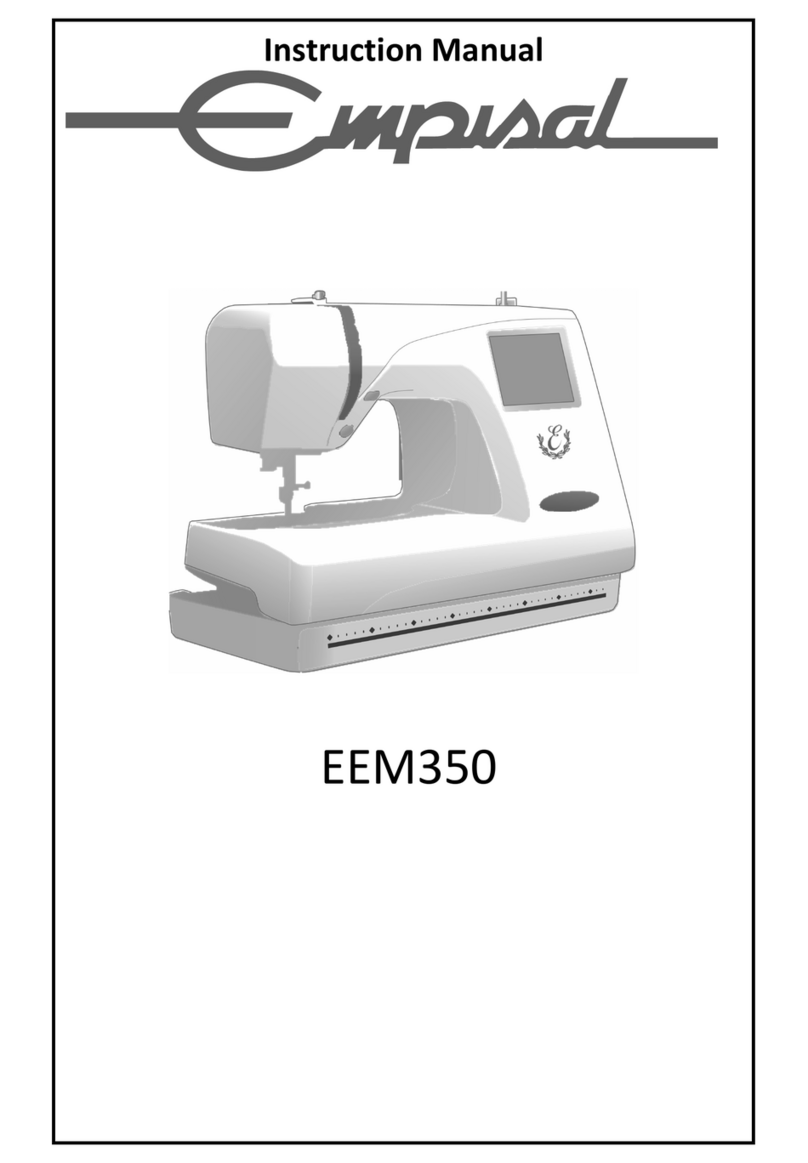
Empisal
Empisal EEM350 User manual

Empisal
Empisal Dress Maker 270D User manual
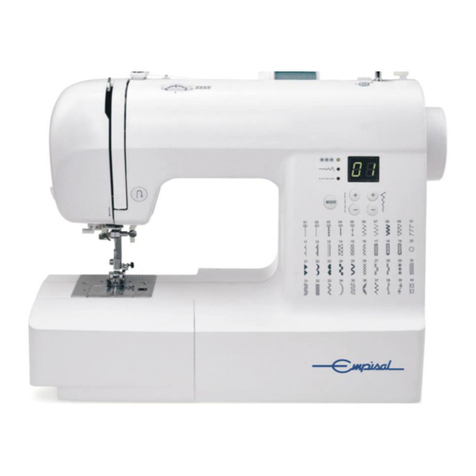
Empisal
Empisal EES10 User manual
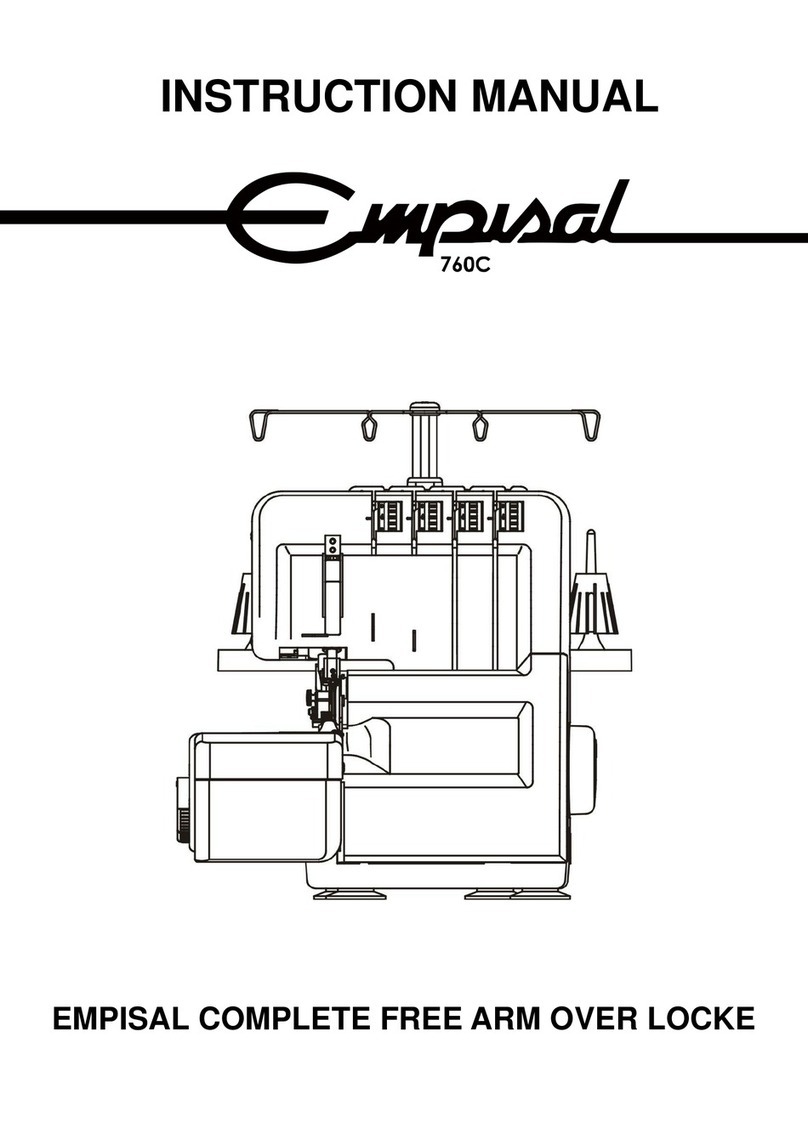
Empisal
Empisal 760C User manual
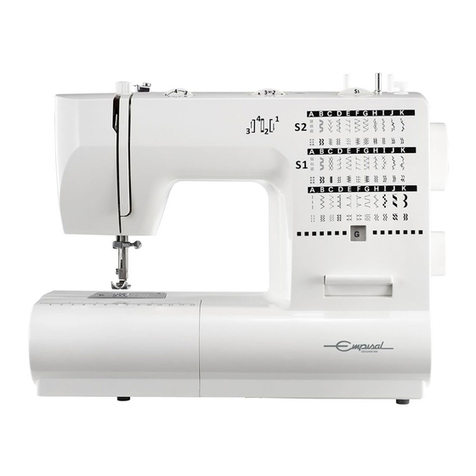
Empisal
Empisal Designer 800 User manual
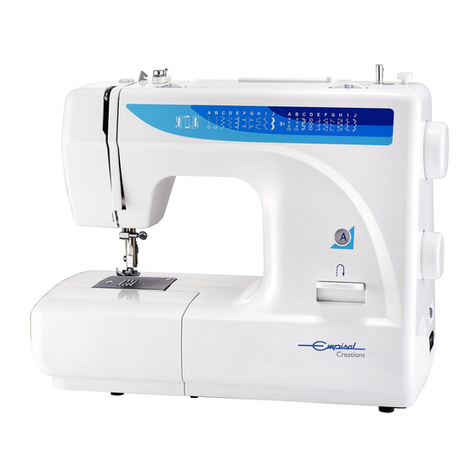
Empisal
Empisal creations User manual
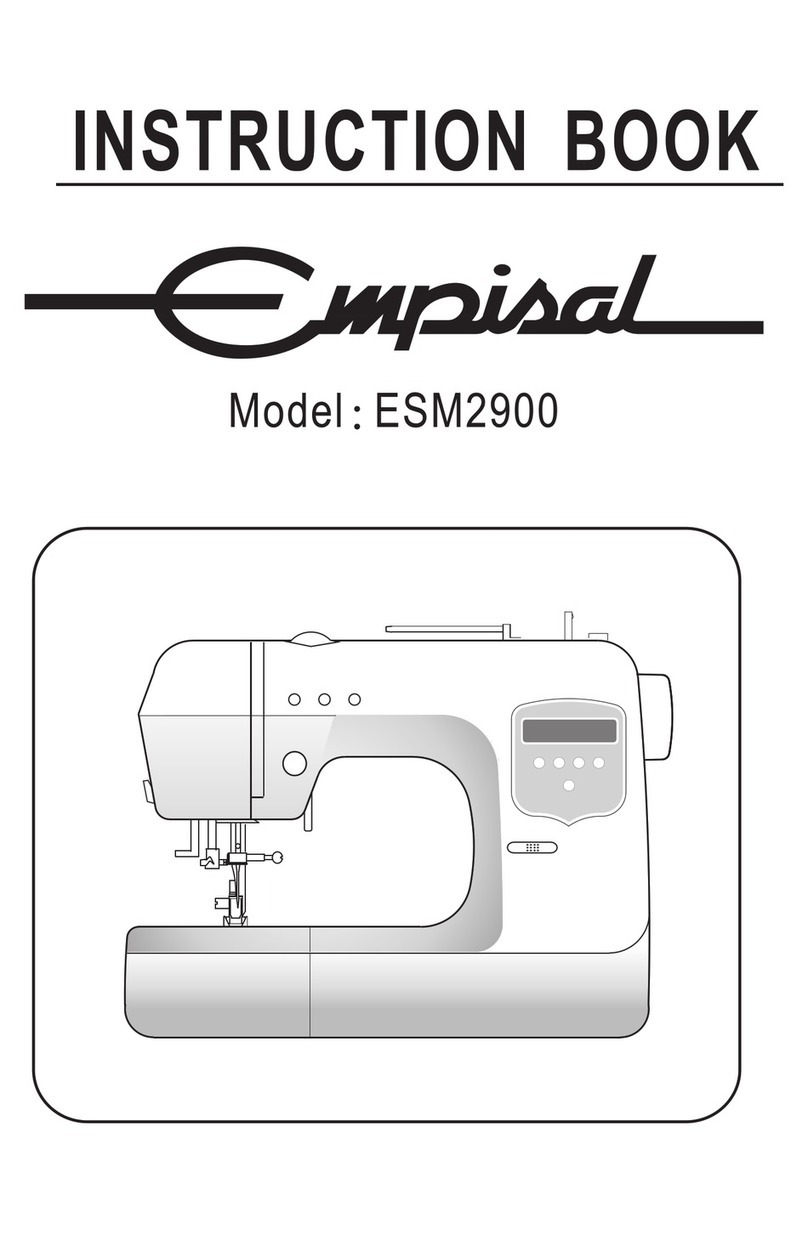
Empisal
Empisal ESM2900 User manual
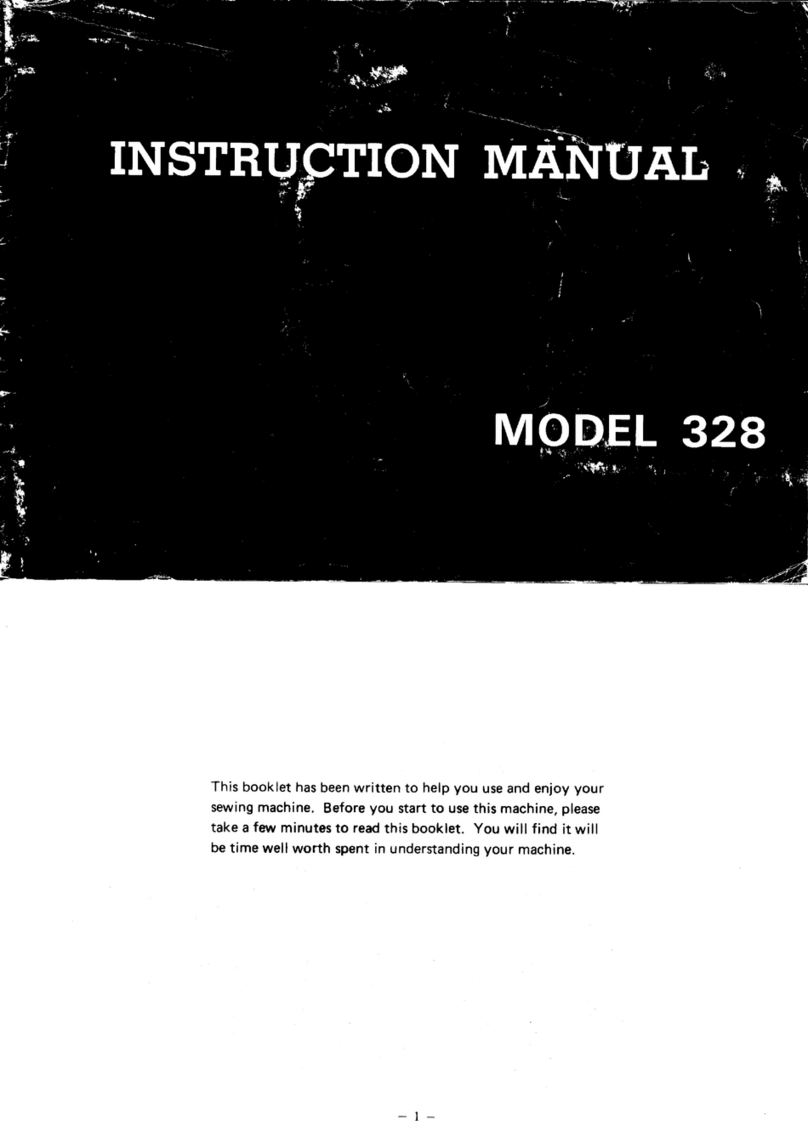
Empisal
Empisal Heidi 328B User manual
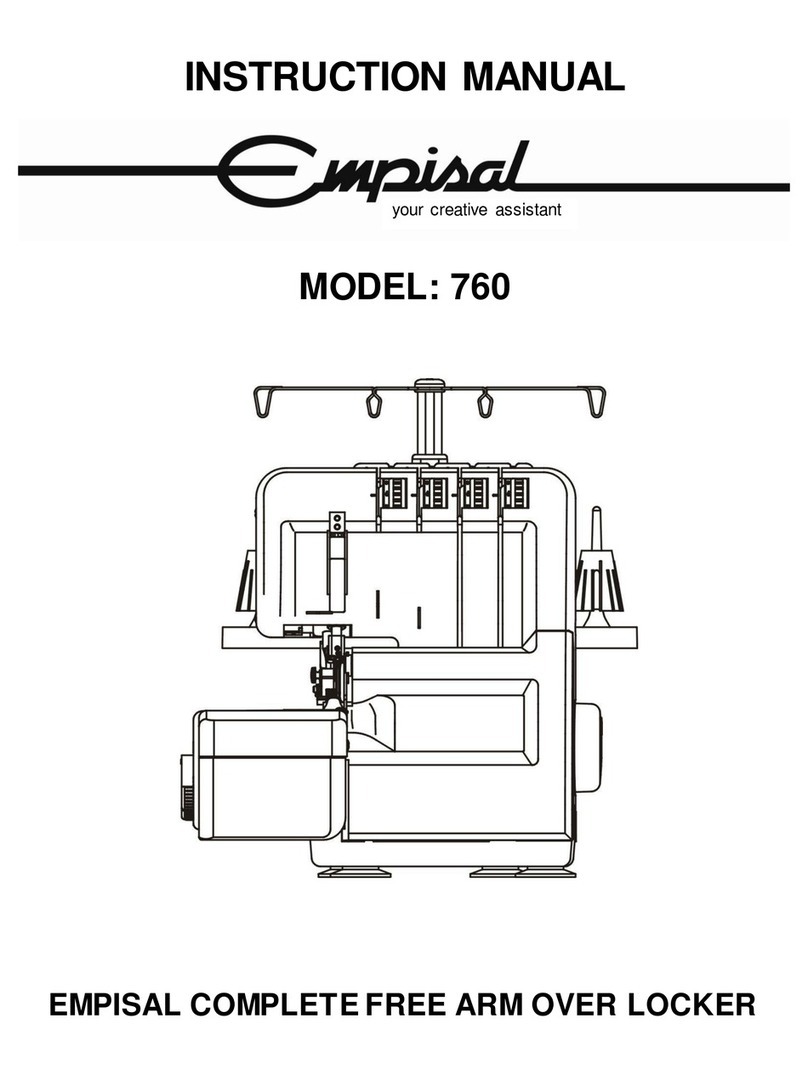
Empisal
Empisal 760 User manual
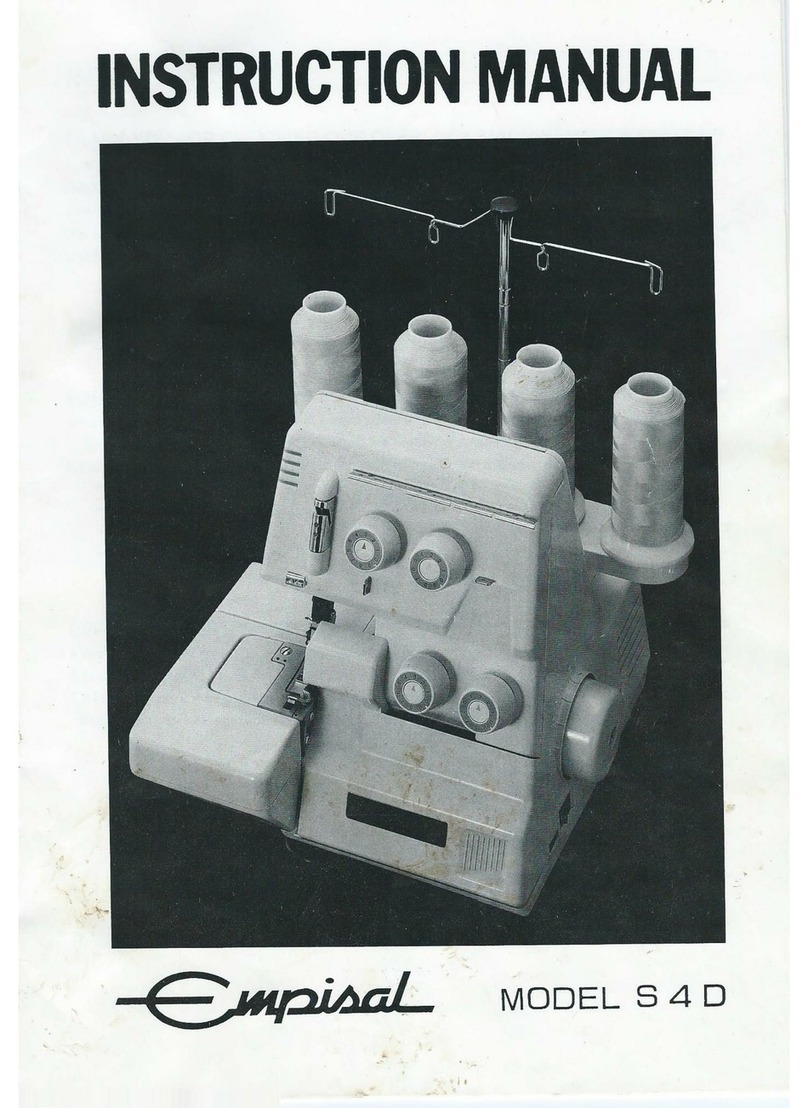
Empisal
Empisal S4D User manual
